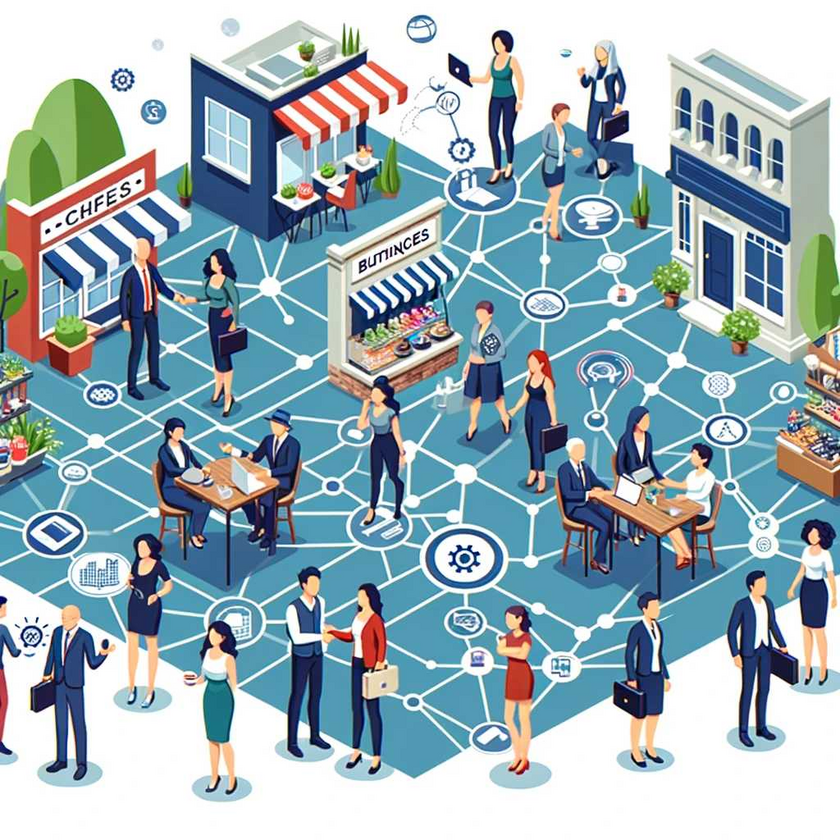How to Bypass AI Detection Solutions
Understanding AI Content Detection
Understanding AI content detection mechanisms is vitally important for multiple stakeholders, such as writers, students and professionals.
AI Detection Tools: Understanding Their Importance
AI detection tools play a critical role in upholding written content integrity by recognizing texts generated by artificial intelligence (AI). They enable educators to verify student work authenticity by distinguishing between genuine human-written materials and AI-generated or paraphrased sections that could potentially compromise written integrity. Word Spinner offers insights that are widely utilized across educational settings.
Automated content detection uses algorithms that analyze text for specific features that differ from what would be expected from human writers. This technique is beneficial for educators, employers, and content creators as it adds an extra layer of quality control and helps uphold standards in various fields.
How AI Detectors Work
AI detectors analyze features in text that indicate artificial intelligence generation. Their algorithms search for stylistic anomalies, vocabulary usage patterns and writing structures associated with artificially produced content. Tools like Originality.AI claim to detect both AI-generated material as well as non-original copy through thorough scanning processes.
OpenAI has developed a watermarking approach intended to tag AI-generated texts, though its reliability after text editing remains uncertain.
AI detectors have become more capable of identifying AI-generated content thanks to integrating various analytical techniques. Understanding their functions is essential for those seeking to avoid AI detection or make their content unnoticeable via available technologies and strategies.
AI Detection: Key Players
Artificial intelligence-generated content has become more pervasive. AI detection tools exist to aid professionals, educators and businesses identify and control AI-produced texts.
Turnitin’s AI Content Detector
Turnitin's AI Content Checker is an invaluable asset to educators and publishers, identifying artificial intelligence writing tools such as ChatGPT and text spinners in student submissions. This detection tool offers insight into changing writing practices while upholding educational integrity.
Turnitin AI detector provides educators with an effective tool for quickly detecting content created or paraphrased with artificial intelligence, helping maintain academic standards. The detector integrates seamlessly into Learning Management Systems (LMS). Educators can quickly recognize any instances where artificial intelligence (AI) generated content has been utilized by quickly recognizing it within LMSs.
Word Spinner’s AI Removal and Bypass Feature
Word Spinner takes an innovative approach with its "AI Detector & Remover" tool, which lets users test text for AI detection tools before providing a way to remove such content if it will be flagged by AI detection tools like GPTZero, Originality and Copyleaks. This feature can also be especially helpful in bypassing detection by major AI detectors like these three - particularly helpful for bypassing detection from major detectors like these three mentioned here!
Word Spinner's detection capabilities are enhanced through machine learning models trained with large datasets from both AI writers and human authors, improving its accuracy. Furthermore, its AI Removal feature helps authors ensure their content cannot be detected as being produced by an artificial intelligence algorithm.
Turnitin and Word Spinner represent important advances in AI detection technologies. Not only can these tools identify AI-generated content, but they also offer effective solutions for those wishing to bypass detection altogether.
Factors Affecting AI Detection Accuracy
Understanding what factors impact AI detection software accuracy for those seeking to identify AI-generated content is of vital importance. Their success relies on various considerations.
Stylometric Features Analysis
AI detectors use stylometric features to distinguish machine-generated from human-written content, analyzing factors such as sentence length, vocabulary diversity, complexity of sentences and punctuation as well as overall readability.
AI detectors can more accurately classify content by evaluating these features; however, as AI-generated text adapts to imitate human writing styles more closely than ever before, these indicators may become less reliable.
Challenges in AI Detection
AI detection tools face various difficulties as AI-generated content continues to advance. AI content often mimics human characteristics, making detection more challenging; AI text tends to be unpredictable and filled with creative expressions such as colloquialisms and variations in sentence structure that make reading it more unpredictable than before.
Accuracy of AI detectors can be compromised by:
The quality and diversity of training data.
The adaptation to the sophistication of evolving AI writing technologies.
The context of the text being analyzed.
AI detectors tend to be accurate with longer texts; however, they may misidentify human-written text as AI-generated if its complexity and burstiness is low. According to recent studies, premium tools boast an 84% maximum accuracy rate while free ones reach 68% accuracy rates.
Complicating matters further, some plagiarism detection systems will flag AI-generated content due to similarities with existing works; AI writing tends to be especially prevalent on popular topics.
As one way of meeting these challenges, removing turnitin AI detection may be one viable solution. A remover for AI detection could offer additional practical benefits.
Tools and Technologies for AI Detection
There are various tools and technologies that can assist users in recognizing and bypassing AI detection in order to produce undetectable AI-generated content, including ZeroGPT Algorithm, Surfer AI's Content Detector and Writer AI's Content Detector. Below are three such examples.
ZeroGPT Algorithm
The ZeroGPT algorithm is gaining recognition for its powerful detection abilities. It has been trained on over 10 million articles and can detect 98% of AI-generated text (HubSpot). This algorithm is particularly adept at identifying popular language models like ChatGPT, GPT-4, and Google Bard. ZeroGPT highlights sentences that are most likely created by AI when users input text.
Surfer AI Content Detector
Surfer AI Content Detector detects both AI-generated content and human-written text, with its main aim of recognizing typical language patterns of AI texts. Surfer provides a score between 1 and 100 for AI generated content to help users assess how likely it is that what they're viewing was created by artificial intelligence (AI). Surfer also offers features to "humanize" AI generated content - making it appear as natural human writing whilst maintaining its original intent.
Writer AI’s Content Detector
Writer AI's Content Detector analyzes the percentage of artificially created text within any piece of content. Both its free and paid versions have a 300-word limit for evaluation purposes and give users a percentage representing how much is human-authored. Furthermore, this tool offers suggestions on how to edit to reduce AI percentage.
As AI technology becomes increasingly advanced, individuals seeking to evade detection should employ tools such as those listed. There are various online resources for extracting AI from text and further improving it until it becomes undetectable.
Conclusion
As AI technology progresses, so too do tools for detecting and bypassing AI-generated content. While AI detection tools have become increasingly sophisticated over time, they still face difficulties due to AI's ever-evolving text generation capabilities. Writers, students, and professionals who wish to protect the authenticity of their work must understand these tools' functions; writers using detection or removal technologies may ensure their text complies with academic or professional standards or adjust it so as to remain undetectable by available detection tools - an ongoing balance must be struck in our digital age!



















